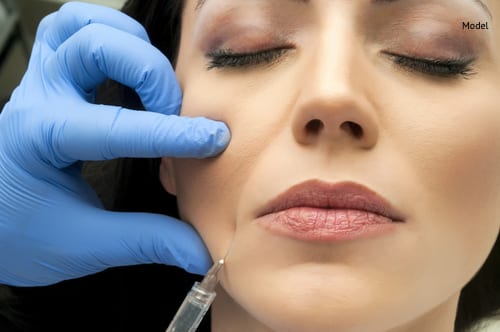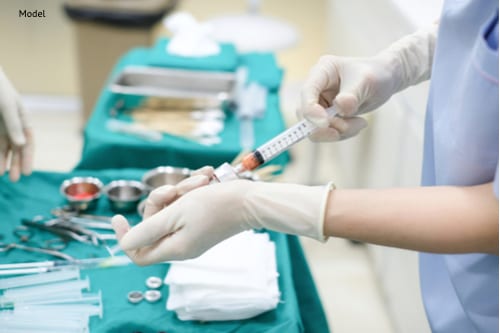Fat vs. Filler: What Are the Facts?
Posted August 26, 2019 in Fat Grafting
Fat grafting and dermal fillers restore fullness to facial contours that have lost volume. Both of these procedures are less invasive than traditional facelift surgery and can provide noticeable facial rejuvenation.

Even though these treatments achieve similar results, the path to those results is different.
What Is Fat Grafting?
Fat grafting, or autologous fat transfer, harvests excess fat from the body that is then injected into a facial region that has volume loss. This technique is performed in two steps; first, liposuction is performed to harvest fat from areas such as the abdomen, hips, thighs, or buttocks. Then the harvested fat is purified to isolate the strongest cells. Once purified, the fat cells can be injected into areas exhibiting depression, typically in the cheeks, around the mouth, and below the eyes.
While some of this transferred fat will not survive the process, the majority of the transferred fat will, allowing patients to achieve a fuller, smoother, youthful facial contour.
What Are Dermal Fillers?
Dermal fillers are synthetic versions of naturally occurring molecules. These injectables return plumpness and fullness to the face by filling wrinkles, fine lines, and volume loss. Fillers can be used on the cheeks, around the mouth, and beneath the eyes. Our injectable options include JUVÉDERM®, Restylane®, and RADIESSE®. These non-invasive treatments provide instant fullness while stimulating collagen production.
What Are the Pros of Fat Grafting?
Natural Results
Fat is an organic augmenting material that provides soft, supple, and natural-looking results.
Less Risk
The possibility of an adverse reaction to a dermal filler is a fear for many potential patients. No one can predict how their body will react to a foreign substance.
Most women and men who receive dermal filler injections experience no complications. However, there is always the risk of an allergic reaction or filler rejection. There is little chance of a reaction or rejection of fat harvested from your body. Some patients consider fat grafting to be a safer option, even though it is more invasive.
Longer Lasting
While the body may eventually absorb transferred fat, it is not absorbed as easily or readily as dermal fillers. Fat grafting can provide noticeable fullness for many years. Most dermal fillers can only provide results for six months to one year.
Improves Multiple Areas
Fat must be harvested from a different region of the body through liposuction. This process allows patients to slim areas of unwanted fat while enhancing areas they wish were more voluminous.

What Are The Pros For Dermal Filler?
No Long-Term Commitment
Some patients are unsure of how much additional volume they want to be added to their cheeks, nasolabial folds, or lips. Since dermal fillers traditionally need to be repeated once or twice a year, patients have the opportunity to try out different amounts and variations of fillers. This way, they can decide which look and feel is best for them.
Less Invasive
Dermal fillers do not require any anesthetic since they contain trace amounts of lidocaine, a common numbing agent. Fillers can also be injected quickly with no trauma to other parts of the body. Fat injections take much longer since the fat must be harvested, purified, and injected.
No Need for Excess Fat
Facial volume loss is a symptom of aging that most will experience at some point. While some patients have excess fat that can be used for harvesting, others do not. Dermal fillers are ideal for patients who are hoping to improve volume without an invasive procedure or those who do not have enough fat to harvest.
If you are interested in rejuvenating your facial appearance through fat grafting or fillers, contact Dr. Cohn by calling (205) 590-9900 or by filling out our online contact form.
